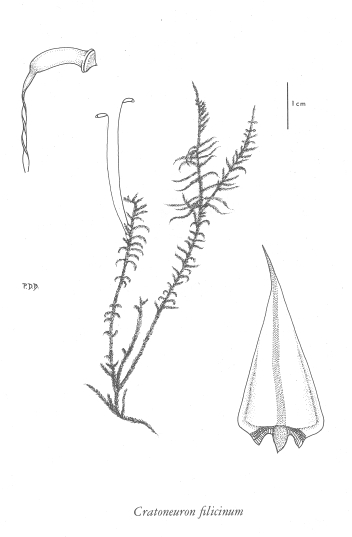E-Flora BC: Electronic Atlas of the Flora of British Columbia
Cratoneuron filicinum (Hedw.) Spruce
fern-leaved hook-moss (cratoneuron moss) Amblystegiaceae Species Account Author: Wilf Schofield Extracted from Some Common Mosses of British Columbia Introduction to the Bryophytes of BC
|
||||||||||||||

